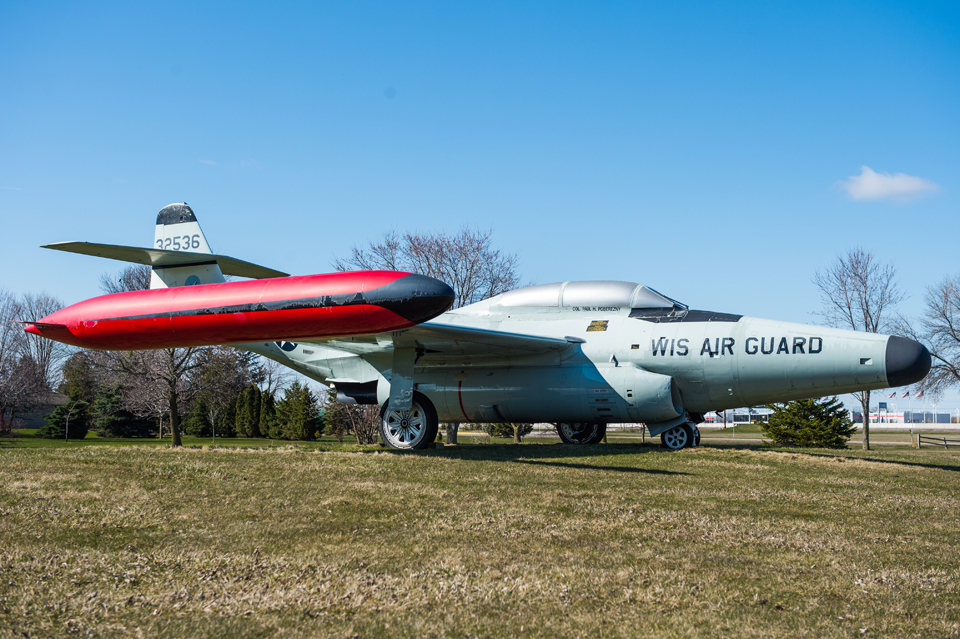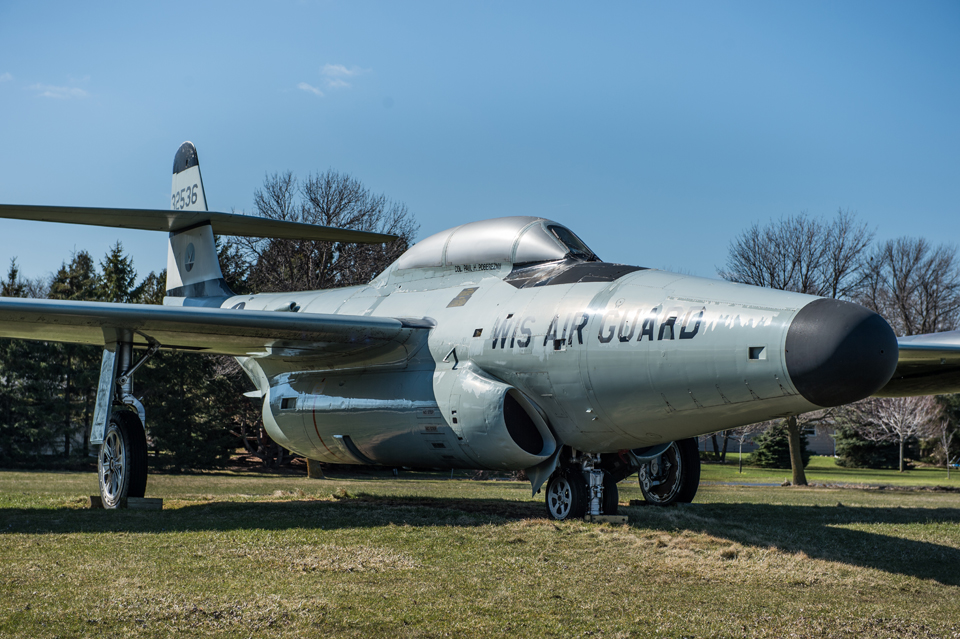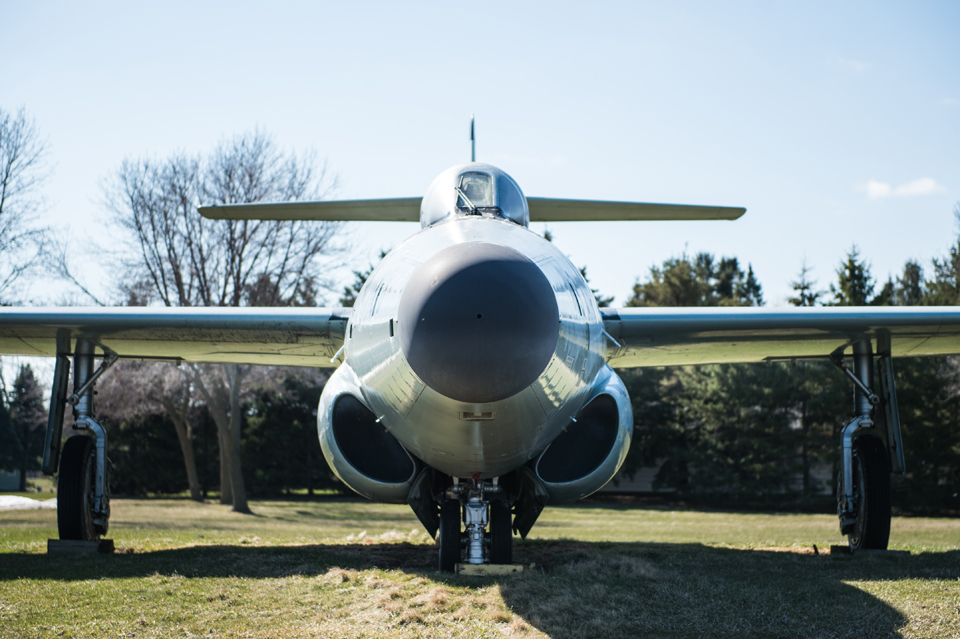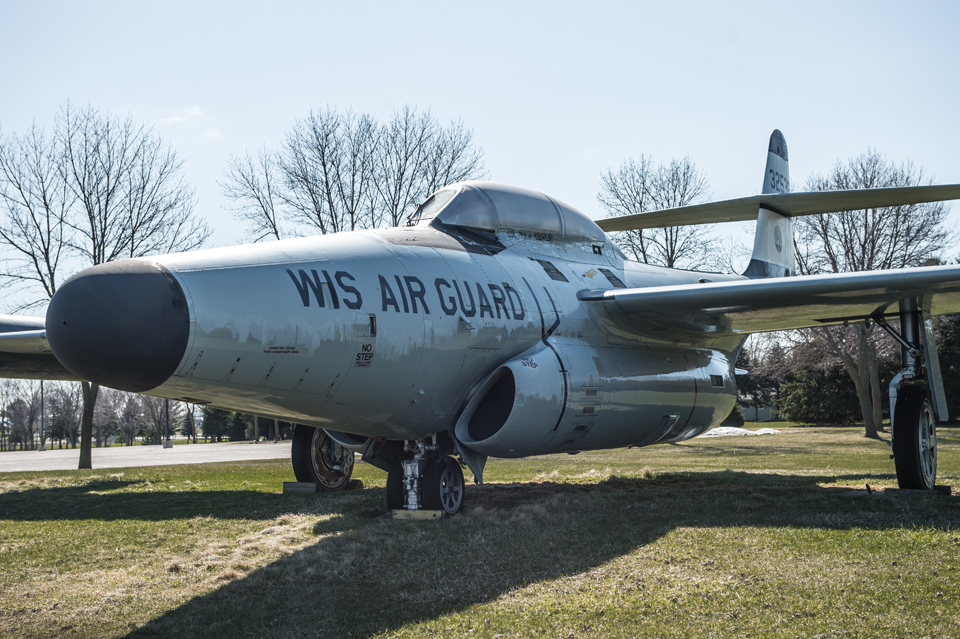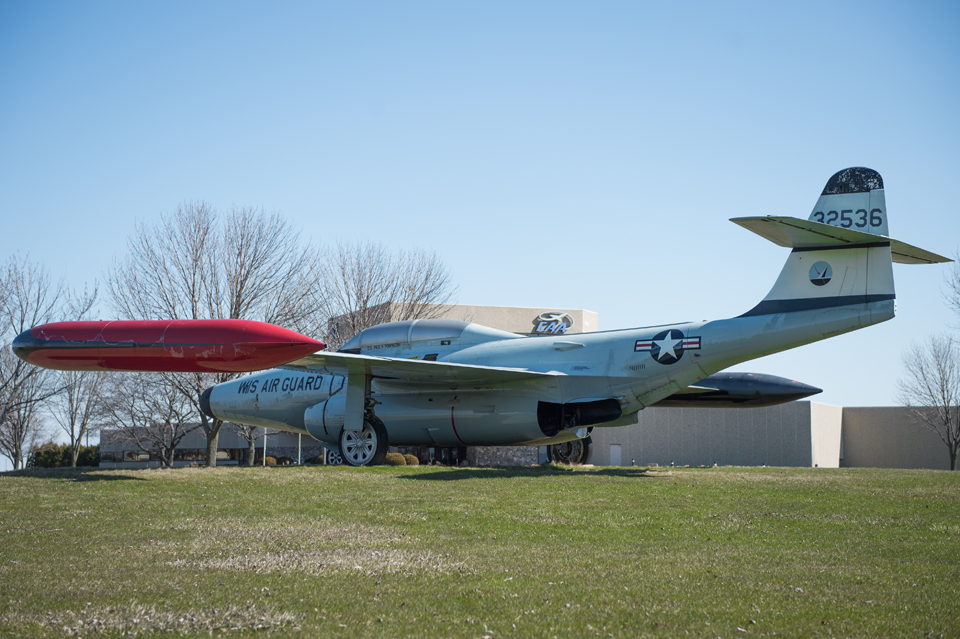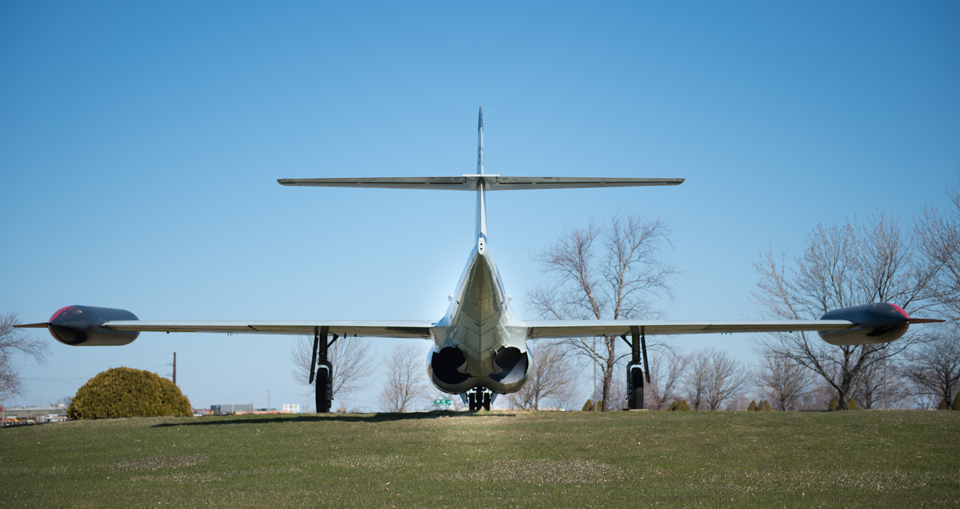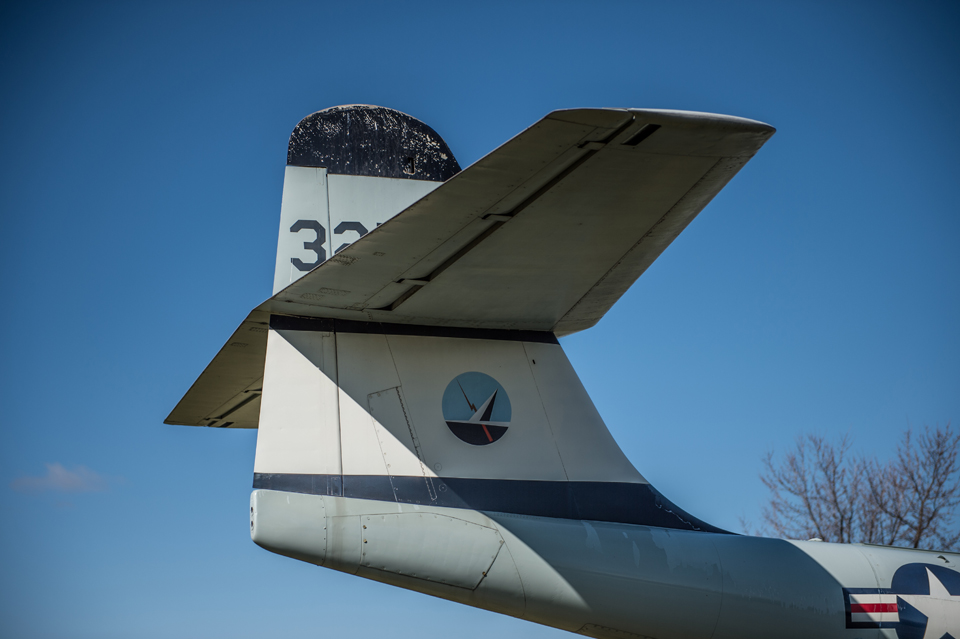1952 Northrop F-89J Scorpion
Location: EAA Grounds
John “Jack” Northrop initially designed the F-89 in 1945, which eventually became the backbone of the North American Air Defense Command. The Scorpion remained in active service for 17 years, equipping 39 active Air Force squadrons and 17 Air National Guard squadrons.
The F-89 was one of the most heavily armed fighter aircraft in history. It was the first to carry an all rocket armament and the first operational aircraft to be armed with the Hughes Falcon air-to-air guided missile. The Scorpion also became the first nuclear-armed interceptor.
A total of 350 F-89Ds were converted to F-89J standards between March 1956 and February 1958. One of the key modifications introduced compatibility with Douglas MB-1 Genie air-to-air rockets, which were unguided ballistic rockets. The Scorpion could carry two Genies on its specially designed rocket launcher rails located under the wing pylons. Later, the F-89J was further modified to accommodate later variants of the Falcon air-to-air guided missiles, which required two additional pylons under the wing located inboard of the Genie pylons.
Another way the F-89J differed from the F-89D was that the wingtip armament pods from the F-89D were replaced with 600-gallon fuel tanks. The F-89J was also updated with the Hughes MG-12 fire control system. This new technology allowed the pilot to launch a Genie while in a nose high, climbing attitude, enabling a pilot to attack bombers at a much higher altitude and still get away from the resultant nuclear fireball.
Initial deliveries of the F-89J began in November 1956, which made Hamilton Air Force Base in California the first operational F-89J unit. Beginning in July 1959, the F-89J was phased out of active Air Force service and transferred to Air National Guard units. The F-89J remained in service until late 1968, when they were finally phased out in favor of supersonic interceptor aircraft.
The Scorpion on display at the EAA AirVenture Museum has been on loan from the National Museum of the U.S. Air Force since 1958.
Aircraft Make & Model: Northrop F-89J Scorpion
Length: 53 feet 8 inches
Wingspan: 59 feet 8 inches
Height: 17 feet 6 inches
Maximum Takeoff Weight: 47,719 pounds
Seats: 1
Powerplants: Allison J35-A (x2)
Thrust: 4,900 pounds each
Maximum Speed: 627 mph
Cruise Speed: 465 mph
